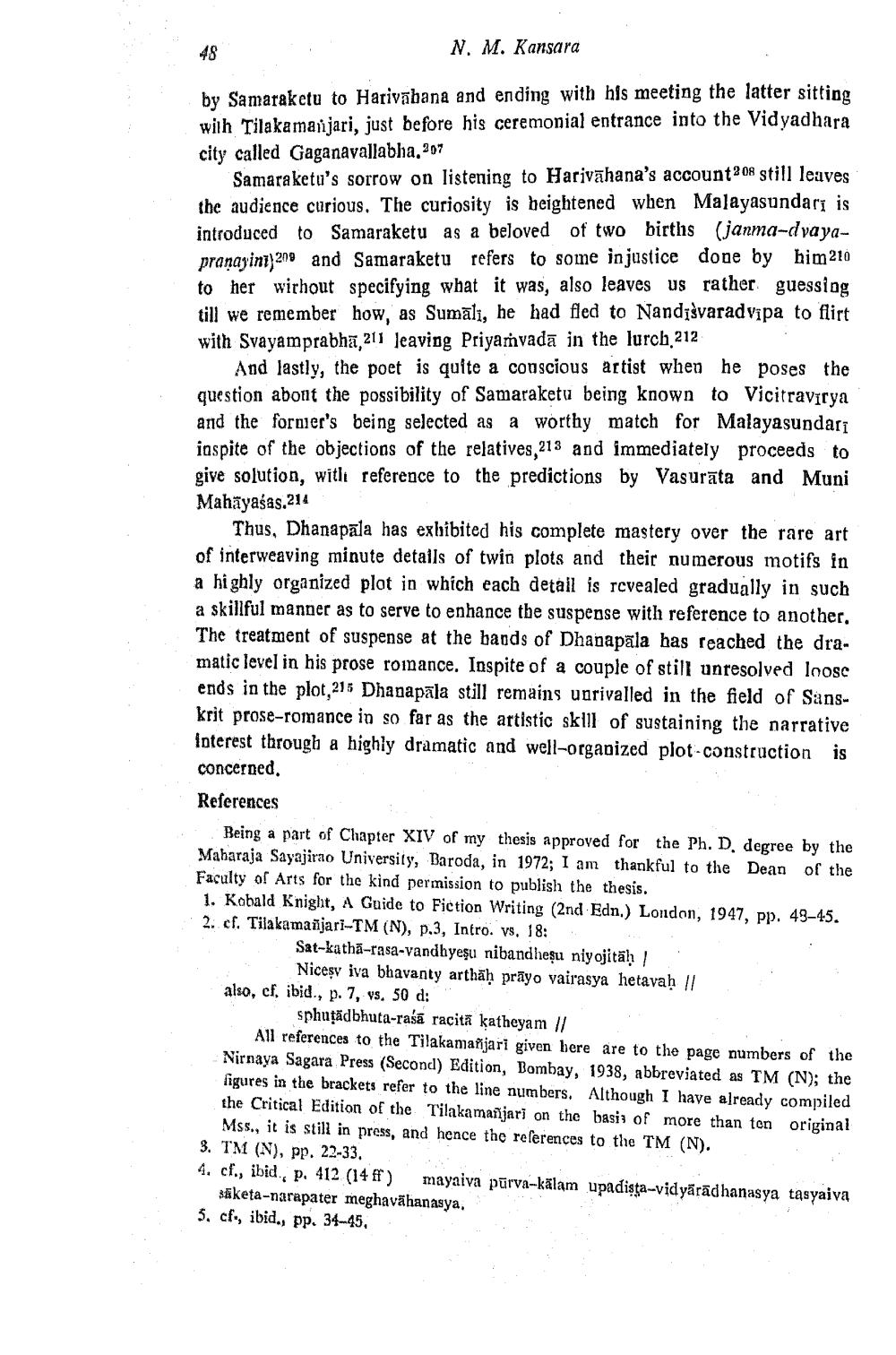________________
N. M. Kansara
by Samaraketu to Harivābana and ending with his meeting the latter sitting with Tilakamasjari, just before his ceremonial entrance into the Vidyadhara city called Gaganavallabha,207
Samaraketu's sorrow on listening to Harivahana's account 208 still leaves the audience curious. The curiosity is heightened when Malayasundari is introduced to Samaraketu as a beloved of two births (janma-dyayapranagini) 209 and Samaraketu refers to some injustice done by him 210 to her wirhout specifying what it was, also leaves us rather guessing till we remember how, as Sumāli, he had fled to Nandisvarad vīpa to flirt with Svayamprabha,211 leaving Priyamvada in the lurch 212
And lastly, the poet is quite a conscious artist when he poses the question about the possibility of Samaraketu being known to Vicitravīrya and the fornier's being selected as a worthy match for Malayasundari inspite of the objections of the relatives, 213 and immediately proceeds to give solution, with reference to the predictions by Vasurāta and Muni Mahāyasas.214
Thus, Dhanapala has exhibited his complete mastery over the rare art of interweaving minute details of twin plots and their numerous motifs in a highly organized plot in which each detail is revealed gradually in such a skillful manner as to serve to enhance the suspense with reference to another, The treatment of suspense at the hands of Dhanapala has reached the dramatic level in his prose romance. Inspite of a couple of still unresolved loose ends in the plot 215 Dhanapala still remains unrivalled in the field of Sanskrit prose-romance in so far as the artistic skill of sustaining the narrative Interest through a highly dramatic and well-organized plot-construction is concerned. References
Being a part of Chapter XIV of my thesis approved for the Ph. D. degree by the Maharaja Sayajirao University, Baroda, in 1972; I am thankful to the Dean of the Faculty of Arts for the kind permission to publish the thesis. 1. Kobald Knight, A Guide to Fiction Writing (2nd Edn.) London, 1947, pp. 43-45. 2. cf. Tilakamañjari-TM (N), p.3, Intro. vs. 18:
Sat-kathā-rasa-vandhyesu nibandheșu niyojitäh !
Niceşviva bhavanty arthāḥ prāyo vairasya hetavaḥ // also, cf, ibid., p. 7, vs. 50 d:
sphuţădbhuta-rasa racitā katheyam | All references to the Tilakamañjari given here are to the page numbers of the Nirnaya Sagara Press (Second) Edition, Bombay, 1938, abbreviated as TM (N); the figures in the brackets refer to the line numbers. Although I have already compiled the Critical Edition of the Tilakamañjari on the basis of more than ten original
Mss., it is still in press, and hence the references to the TM (N). 3. TM (N), pp. 22-33. 4. cf., ibid., p. 412 (14ff) mayaiva pūrva-kālam upadista-vidyārādhanasya tasyaiva
saketa-narapater meghavähanasya, 5. cf., ibid., pp. 34-45,




